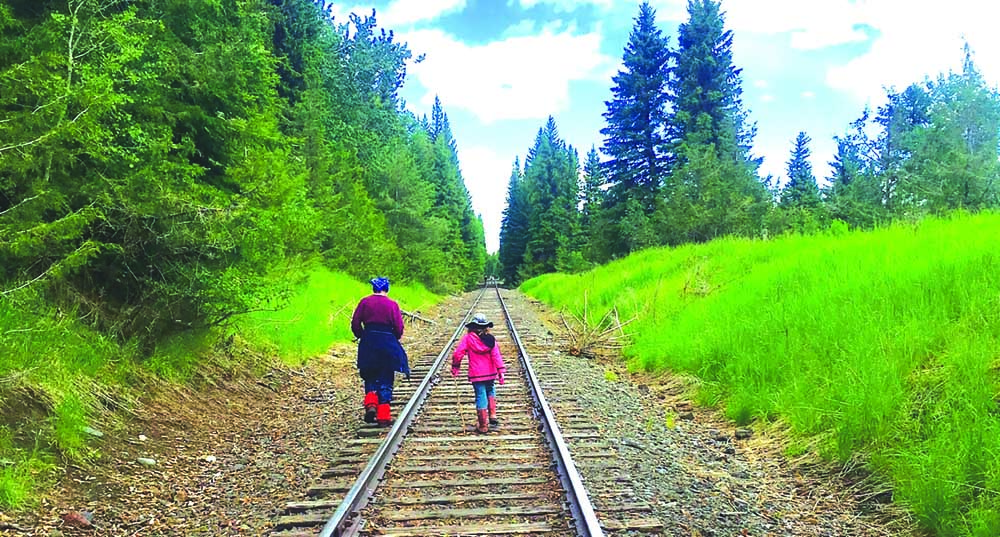Hedges here are underdone
Published 5:00 pm Tuesday, May 15, 2012

- <p>Low hedges are useful alongs sidewalks, encouraging pedestrians to keep to established walkways. This example is from the Wallowa County Courthouse square, where a boxwood species fits the bill.</p>
Hedges.
Wallowa County.
It’s like you can’t get them together. Look around this area. How many hedges can you find? That number would pale next to what you’d see in almost any other comparably sized community.
Dale Worden, a local landscape professional, acknowledges that hedges here are relatively few in number, but he can’t say why that’s the case. I don’t know. They just haven’t gained popularity, he says. I put one on the side of my house with hedge maples because it’s all leafy and it turns many colors in the fall.
If he has to list a down side to his maple hedge, it’s that it’s leafless through winter, when you can see right through it.
That leafless period aside, maple (and more specifically, Siberian hedge maple) is precisely what Worden would recommend for producing a healthy hedge in this area. Generally, deciduous species (that is, trees or shrubs that shed their leaves annually) cope well with the long, dry winters.
This doesn’t mean you can’t go with an evergreen, however.
Here if you want an evergreen, it needs to be a coniferous, like a pine or something like that. Some people want to make them out of blue spruce, he adds.
He mentions that Mugo pine can also work, but you’ll need to be patient. They’re going to be slow. They’re not going to be a tall hedge for a long long time. But they’ll be very thick and give you color all winter.
We tend not to think of hedges as being fashioned deliberately small, but there is a common application for these bordering walkways, particularly at public locations where landscapers have an interest in keeping foot traffic on the walkway. You can find boxwood, a short plant, performing this duty on the Wallowa County Courthouse square.
In truth, practically any shrub or tree that grows reasonably well can be used in a hedge. Hereabouts, though, the list won’t include laurel or photinia species Worden says are quite popular for hedges in the Portland area but won’t stand up to Wallowa County’s winter.
On the doable but dubious side: a line of elms. (I don’t particularly like them myself, Worden says.)
A choice easier to recommend: English privet, the species most commonly found in those legendary English hedges.
Wallowa County residents may have a longing for deer resistance understandable, given the growing population of deer but Worden advises not to dwell too much on it.
Not that he doesn’t have any interest in the subject himself. He says he has questioned wildlife biologists about the preference he has observed in deer for more recently planted trees.
A deer will go by and start chewing on something, like a spruce, that’s all over the hillside, just because it’s never been there before. Something new, so they check out what it is, Worden says. He adds that a biologist once told him that nursery-grown trees, because they were heavily fertilized, have a bit of salty taste to the deer during the first year. Then, after that the native soil nutrients kick in and they don’t have that salty taste,… the deer don’t bother them… They’re a lot more curious animal than I think we sometimes give them credit for.
Some assorted pieces of
advice for hedge growers:
Start trimming hedge plants well before they reach the full height you want. Otherwise, they end up straight sticks and a bushy top, Worden warns. Twice-per-year pruning following the strong spurt of growth in spring and again early in fall is a reasonable schedule.
Keep your hedge’s width to 30 inches or less. This will not only avoid a problem of having to reach too far over the top to trim it, but wider hedges are also more susceptible to developing a leaning problem as they grow taller. Leaning, by the way, usually results from uneven trimming.
If you ever decide you’ve grown your hedge too tall, be careful about how quickly you reduce its height. A general rule-of-thumb is that no more than a third of its height should be eliminated at once. If you want to cut more severely, seek advice from your local nursery. The best time to reduce height is at the end of the dormant season, just before the plants begin to sprout.
In general, you shouldn’t hesitate to contact nurseries, the Extension Office, and City Hall with questions about your existing or contemplated hedge. A City Hall call usually occurs before planting and may help you avoid a big mistake. You’re never going to go wrong just asking, Worden says.









